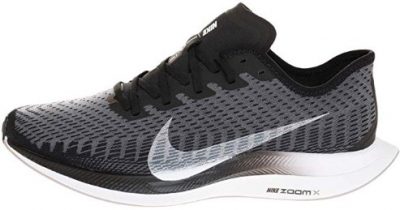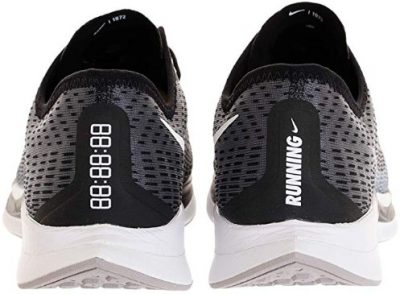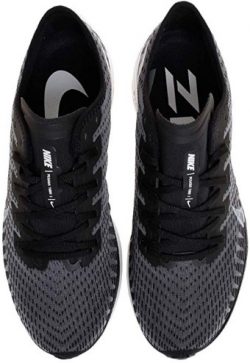Nike Pegasus Turbo 2 Review
Did you know that the Air Pegasus, Nike’s utility running shoe that anyone can use regardless of gait style or experience level, has been with us since 1983? The company began in 1964, under the name Blue Ribbon Sports. Its founders were running coach Bill Bowerman and his athlete protege, Phil Knight. Knight went on to become the first Nike CEO, although the company was not called by that name until 1971. Even if we take 1964 as the start of Nike, that means the Pegasus has been in production for well over half the company’s life. It may not have the hype, extra features, or celebrity endorsements of an Air Jordan or a Metcon trainer, but the Pegasus represents Nike’s more affordable and unforgettable classic offerings.
Speed, cushioning, and a lack of rigidity are the hallmarks of the Pegasus line. That core identity has changed little since 1983. What has changed is the contours, materials, and durability of the shoe. Advances in technology have not affected the shoe’s general silhouette, and Nike has resisted overly complicating the Pegasus. The Nike Pegasus Turbo 2, released on August 1st, 2019, improves on the Turbo 1 from almost exactly one year earlier.
Weighs less, and allows more freedom of movement, than any previous Pegasus according to Nike
Interior of the shoe is smooth, with nearly undetectable stitching and no chafing ever
Upper is made of mesh to keep the shoe breathable, keep feet from overheating
Roomy toe box keeps your toes apart while holding your foot in place with moderate support and cushion
Laces thread through reinforced fabric eyelets, so you can lace tightly with no tearing and shoe will stay put
Thick lugs on heel and forefoot aid in shock absorption
Midfoot has no lugs, so the shoe stays flexible and helps with a strong midfoot strike
Heel cup/heel counter needed to be deeper and more substantial for longer runs
No gusseted tongue--tongue moves independently of upper and may migrate during ling runs
The Rundown
If you miss the chunkier sole pattern of the 1983 Pegasus or other early versions, you can always buy the reissue at a reasonable price. It will cost about what a new pair of the Turbo 2 would. Most buyers are sneakerheads, or collectors, who will wear the 1983 throwbacks as a fashion accessory. It is an unfortunate fact that running shoes degrade over time--for this reason, you will likely never see an intact, wearable pair of original Pegasus. If you somehow found one, perhaps preserved in an airtight container, it would likely crumble to dust if you unboxed or tried to wear the shoe. As durable as 21st-century polymers are, too, the Nike Zoom Pegasus Turbo 2 will likely also degrade over such a long period of time. Get a pair now, to rock or to run in, and wear them down through steady use as Nike intended.
Features
The foam Nike used in the cushioning and midsole is just the right amount of firmness, with enough give to absorb road obstacles while keeping you in touch with the ground. Unlike a lot of modern shoes, the outsole lugs are close enough together that rocks and pebbles will not get caught in them. This is an annoyance that could damage the shoe and injure the bottoms of your feet over time. It happens a lot with cross-training shoes, which often have more open lug spacing or flex grooves to aid with flexibility and liftoff during jumping movements. It is one of the reasons cross trainers do not make good distance runners. But the Turbo 2, being Nike's populist shoe, will double as a gym shoe for the most part and will not let you down during group fitness classes. It is a terrible choice for weightlifting, though, unless you restrict yourself to lightweight, high reps, and a lot of muscle isolating exercises like bicep curls. Nike has plenty of performance lifting shoes--the Pegasus Turbo 2 does not claim to be one of them.
Provided you are not an overpronator, underpronator, or person with chronic joint inflammation, the Turbo 2 will support you during moderate distance running. We say "moderate" because it is probably not ready for the marathon distance. To go that many miles, without getting exhausted and staying sore for weeks after, you really need a maximalist shoe with visible layers of cushioning. Most public marathons take place in cities, too, with unforgiving asphalt or concrete underfoot at every step.
This is an unusually lightweight shoe, thanks to the mesh upper. The stitching and thickness give the whole shoe a translucent look, regardless of color pattern. Uppers are synthetic, but it is not clear if the Pegasus Turbo 2 is a vegan shoe. The mesh is lofted, meaning it curves along with a smooth pattern established by the material under it. That material is the same as the inner part of the shoe.
Finding the actual seams inside the Turbo 2 is a challenge, because of the lofting and precision stitching; the benefit for you is a comfy ride with no chafing and little chance that the lining will tear over time. On cheaper or poorly made athletic shoes, the fabric will often wear out to reveal the heel cup. Weak heel cups, which fragment under regular use, seem to go hand in hand with too-thin fabric. But the Nike Zoom Pegasus Turbo 2 combines quality fabric with a plasticized heel cup for rigidity, extra heel support, and a durable, trouble-free wear experience even over time.
Extra Features
Rounding out the extra features, Nike put a partial sleeve, like a nonremovable sock, inside the shoe from the toe to the middle of your foot. The sleeve is part of an anatomically friendly footbed shape and can help you run for more extended distances as you continue to train in the shoes.













